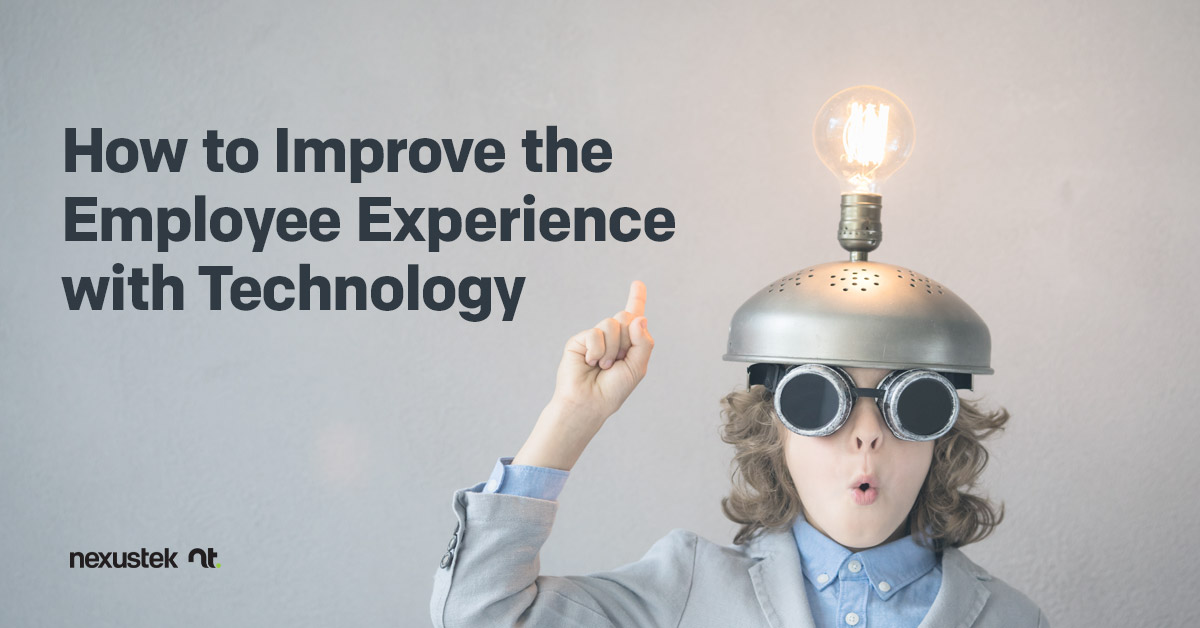READ TIME: 4 MIN

- (Updated May 1, 2023)
How to Improve the Employee Experience with Technology
What is the Employee Experience? Employee experience (EX) is the collective of what people encounter and observe during their employment at a company.
Remote working continues to be a widespread and popular practice, and as a result the talent available to organizations can now be recruited at a national level. Not only is this beneficial to businesses looking to recruit top talent, but it also empowers job candidates to be more selective with which company they want to join. If one company doesn’t offer the perks they desire in a job, they now have access to thousands of other businesses competing for their talent.
One of the ways companies are distinguishing themselves from competitors is a focus on EX. Creating a work environment that’s positive, collaborative, motivating, and provides work/life balance helps to attract top talent, improves employee retention, and increases productivity. The technology employees rely on plays an important role in the employee experience, especially for remote workforces.
Here are some examples of how technology can help improve EX
There are few things more frustrating than a device that runs slowly or constantly malfunctions. Employees require efficient laptops with the latest standard in HDD space and RAM, and a mid to large sized monitor (sometimes 2 for dual viewing). Those items should be the gold standard for technology needed to productively work from home.
Devices like HD web cams, wireless mouse and keyboard, Bluetooth headphones, and wireless printers, help to expand employee capabilities when working from home. Employees that are well equipped with the right technology will be more productive, feel valued by their employer, and confident in carrying out business critical tasks.
With the increase in remote workforces, one of the new challenges that businesses face is creating a collaborative and engaging environment away from a physical office. Microsoft 365 can help employees stay connected and collaborate with team members, as well as create a positive and engaging experience.
Microsoft Teams (a video conferencing and collaboration platform) is tremendously valuable not only for teamwork, but also as a tool to foster a positive employee experience.
Some examples of how Teams can be leveraged to enhance the employee experience include:
- Communication during recruiting and onboarding
- Getting to know your employees and starting a dialogue
- Recognition and acknowledgement of key achievements
- Regularly provide updates and progress to team/company goals
- Team building activities like Coffee Calls, Trivia, Book Clubs, Virtual Celebrations, Cross-department calls, etc.
Traditionally, an office may have an “IT person” that can troubleshoot and fix system or device issues. However, now that many workforces have transitioned to work from home…how can remote employees resolve issues on their work devices? If an employee is having technology issues and doesn’t have an IT expert readily available 24/7 to help them, you’re looking at hours (maybe days) of lost productivity and an exasperated employee that just needs their technology to work.
We all know technology is prone to have moments of failure, so ensure your employees have the tech support they require to maintain productivity and perform their job responsibilities without hassle.
The security of a company’s data and assets isn’t only the responsibility of IT leadership; everyone in an organization has a role in exercising cybersecurity best practices. Employees (especially remote workers) are heavily targeted by cyber criminals because they know the greatest vulnerability in a business’s defenses is the people due to natural human error.
The absence of cybersecurity training, along with not having the proper security solutions to help protect employees, can lead to uneasiness and a lack of confidence in carrying out daily tasks…especially if employees routinely engage with external parties.
Investing in cybersecurity awareness training will provide your employees with the essential knowledge they need to identify potential cyber threats and protect company assets.